We use cookies, along with some third-party sites (like Google, Facebook, etc.). By continuing to visit this site you agree to our use of cookies.


- Search Yachts
- Destinations
- Company
- Sailing info
- Blog
Need help? Contact us
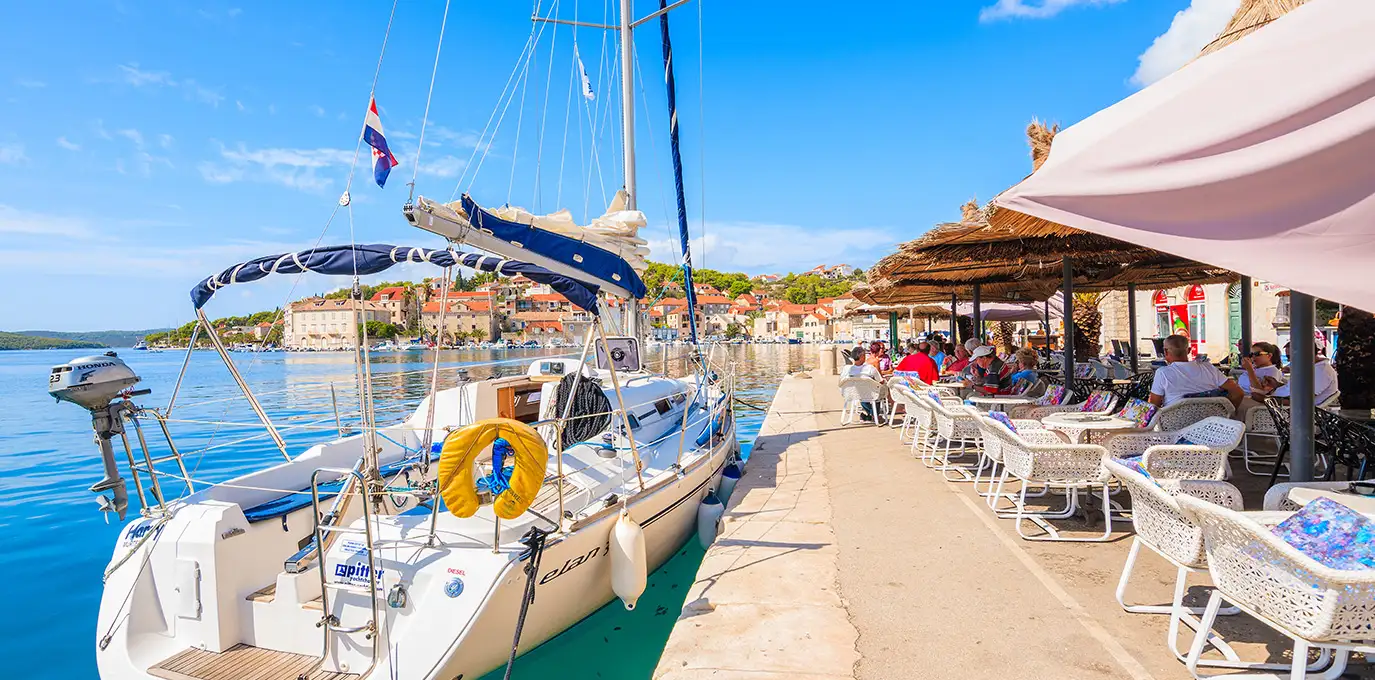
Milna is a town Built with Brač stone, facing the sun and the sunrise, protected from the harsh winds and refreshed by the summer afternoon breeze of the maestral, Milna is a calming haven for both people and boats.
This miniature oasis of Mediterranean culture is situated at the base of a deep bay at the south-westernmost point on the island of Brač and is protected from the elements and anxiety of modern life. It is a village that has a rich fishing, maritime, and wine-growing history evoked in the captain’s palaces and fishermen’s and peasant houses.
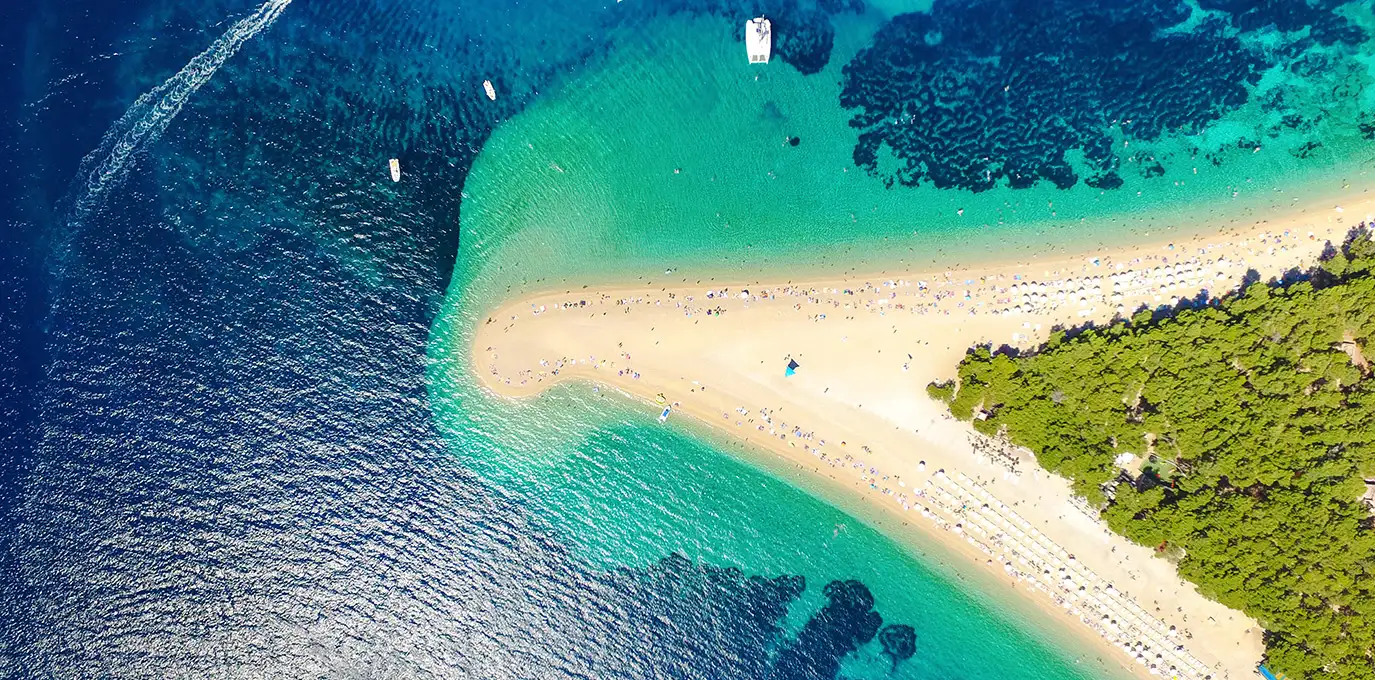
The island of Brač is the highest and third largest island in the Adriatic Sea. The island is well known for its quality stone used to build many palaces. This is the island with the only stone mason school in Croatia. The Zlatni rat beach spreads to the west of Bol and is one of the biggest and most beautiful natural beaches on the Adriatic. Like a tongue stretching almost half a kilometer into the sea, it grows with the drifting deposits of tiny pebbles, changing its shape depending on the wind and the direction of the waves.
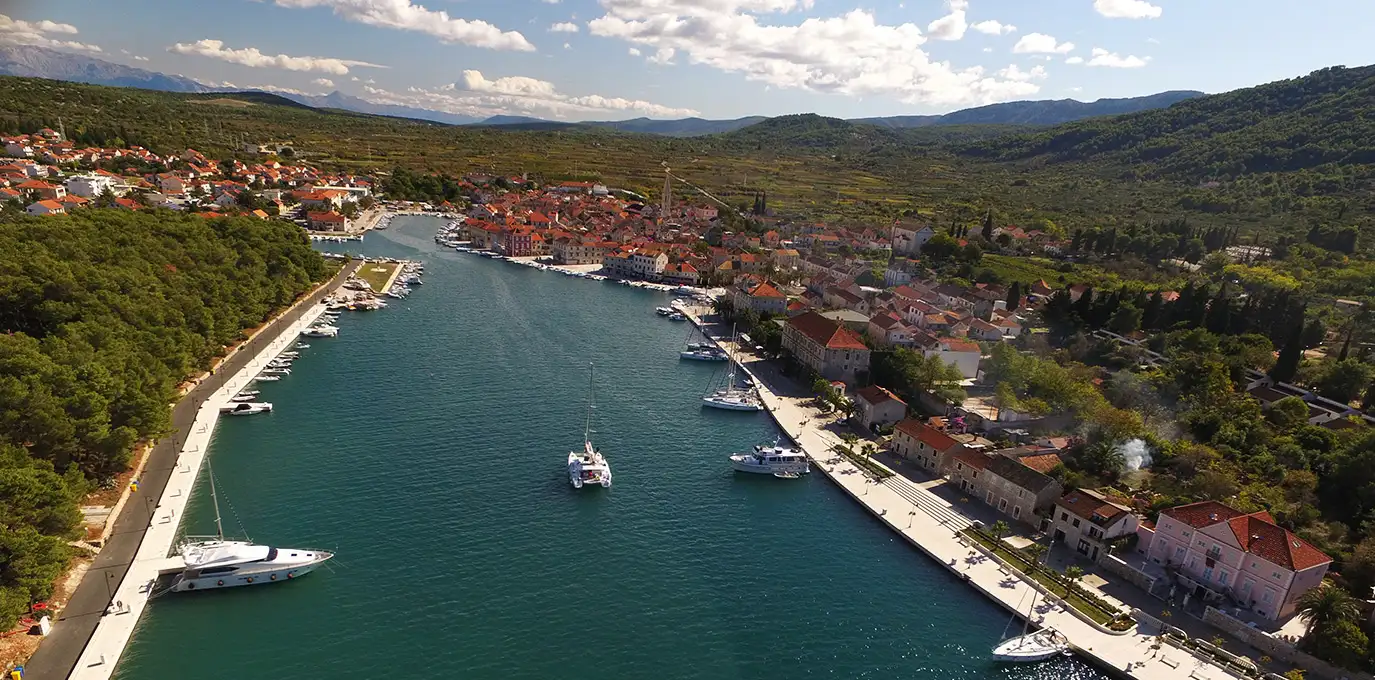
Stari Grad (the Old Town) - Pharos, the oldest city in Croatia, established by the Antique Greeks in 384 B.C., is the historical heart of the island of Hvar, one of the ten most beautiful islands in the world, known for the seductive scent of its lavender fields. The city is situated where the deep bay touches the greenery of the vast fields - the famous Hvar Ager (Starigrad field), which is included in the UNESCO list of World and Cultural Heritage. The most valuable part of the cultural heritage of Stari Grad is Tvrdalj, the fortified Renaissance castle with a fish pond and garden (16th century), which was owned by the famous Croatian poet, Petar Hektorović.
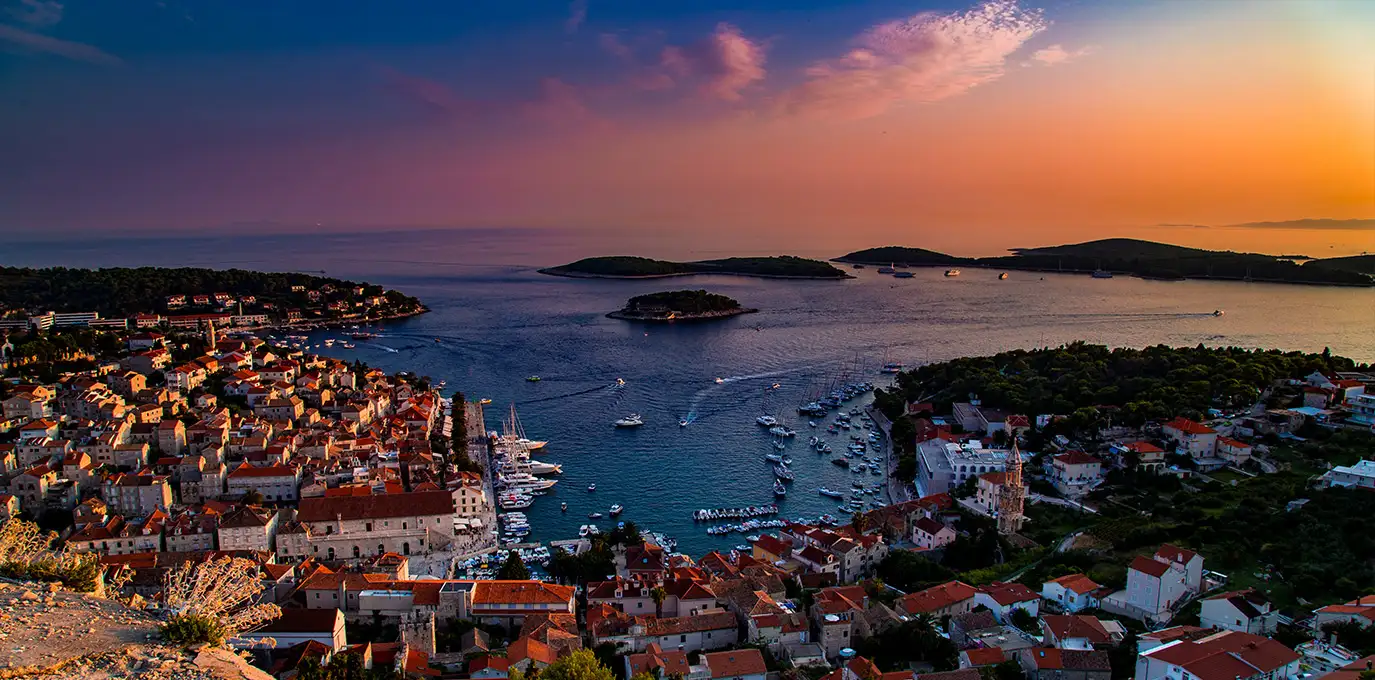
Plamižana (Pakleni otoci) - The oldest and most famous Hvar’s resort and the nautical marina. Palmižana (Vingradišće lagoon precisely) is a spacious lagoon with a shallow and sandy beach. It is surrounded by a thick, pine forest, fragrant heather and rosemary bushes, and various, exotic plants. There are several restaurants and B&Bs. Palmižana can be accessed by the organized, regular boat connection from the port of Hvar.
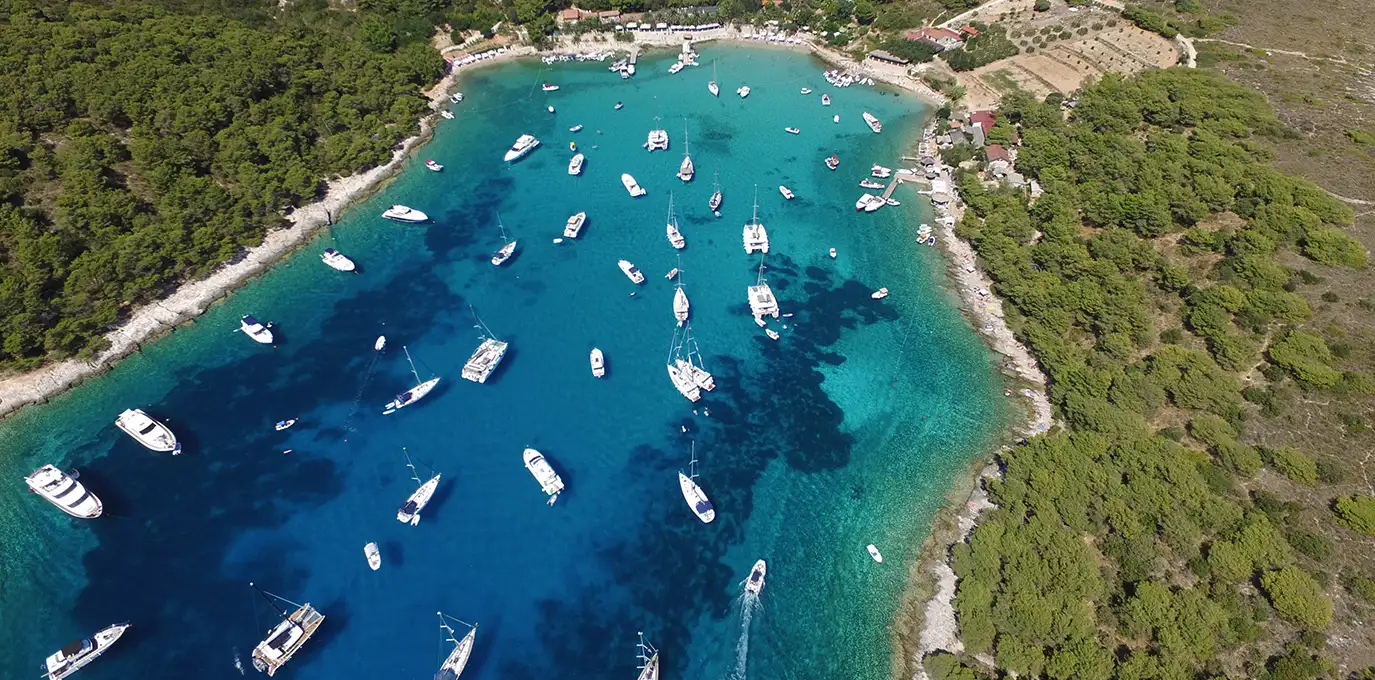
Hvar is a unique blend of luxurious Mediterranean natural surroundings, layer upon layer of a rich cultural and historical heritage, and sophisticated tourism. Located in picturesque natural surroundings on the south side of the island, surrounded by mighty medieval walls, magical fields, and the scent of lavender, Hvar is a never-ending treasure of monumental heritage, culture, and atmospheres. Its name originates from the word PHAROS - the Greek name for the island of Hvar and the town which was formerly in the place of the present Stari Grad (the Old Town) from which it took over the title as island center in the 13th century. From its castle Španjol, high above the town, majestic views open up over the green Pakleni otoci (the Hell Islands) (ACI Marina Palmižana) and the open sea.

The town of Vis is located in the north-eastern part of the island Vis at the bottom of a well-protected bay. It developed from the former settlements Kut and Luka, which became one entity in the 16th century by the building of the church Gospa od Spilica.
The villages on the eastern side of the island such as Zenka, Milna, Bargujac, Podstražje, Podselje, Plisko Polje, and Marine Zemlje gravitate to the town. Since World War II the whole island had been a military area.
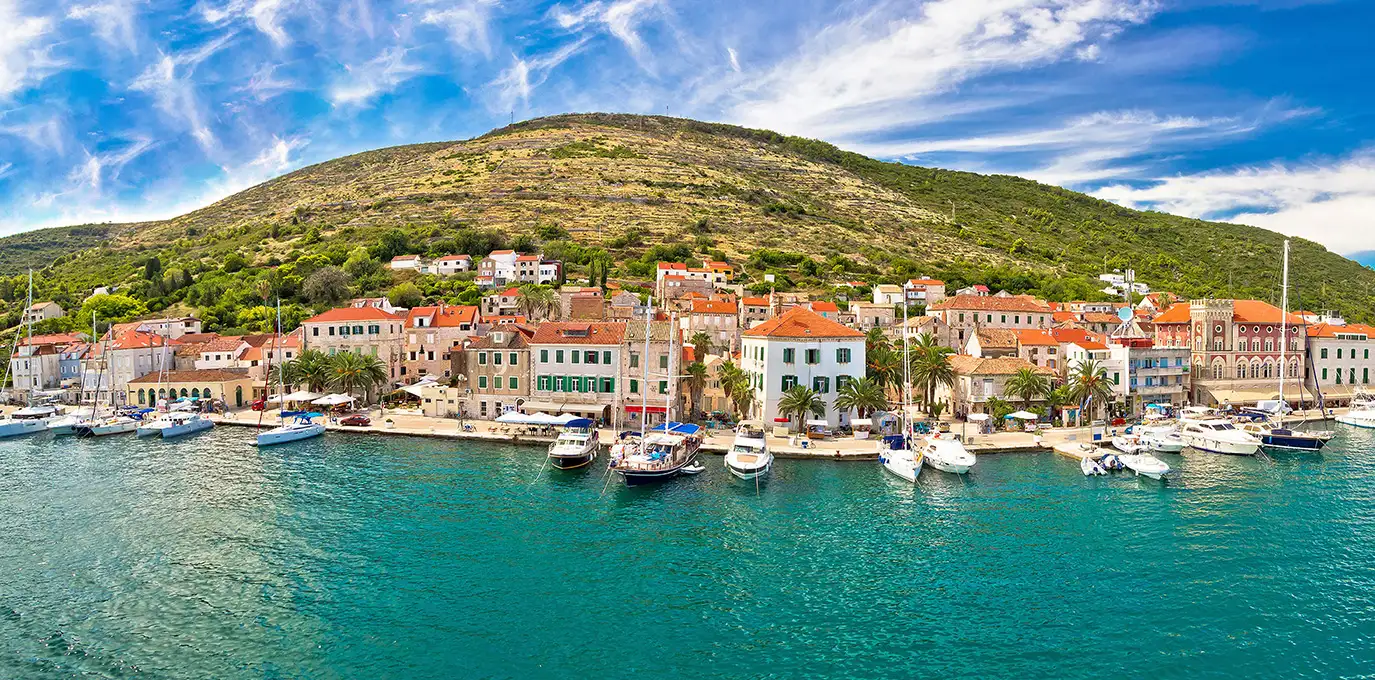
Many visitors, and especially the yachtsmen, are coming more and more to Vis. In every moment you can see changes in lifestyle, but at the same time, Vis has kept the old, irresistible Mediterranean charm and life without stress and trouble.
The fortresses and the stony piles testify to the thousand-year-old settlement on Vis, and the remains of a theatre built into the foundations of the Franciscan monastery on the peninsula Prirovo, antique therms, or the Hellenistic cemetery, confirm that Vis is one of the oldest urban centers in Croatia.
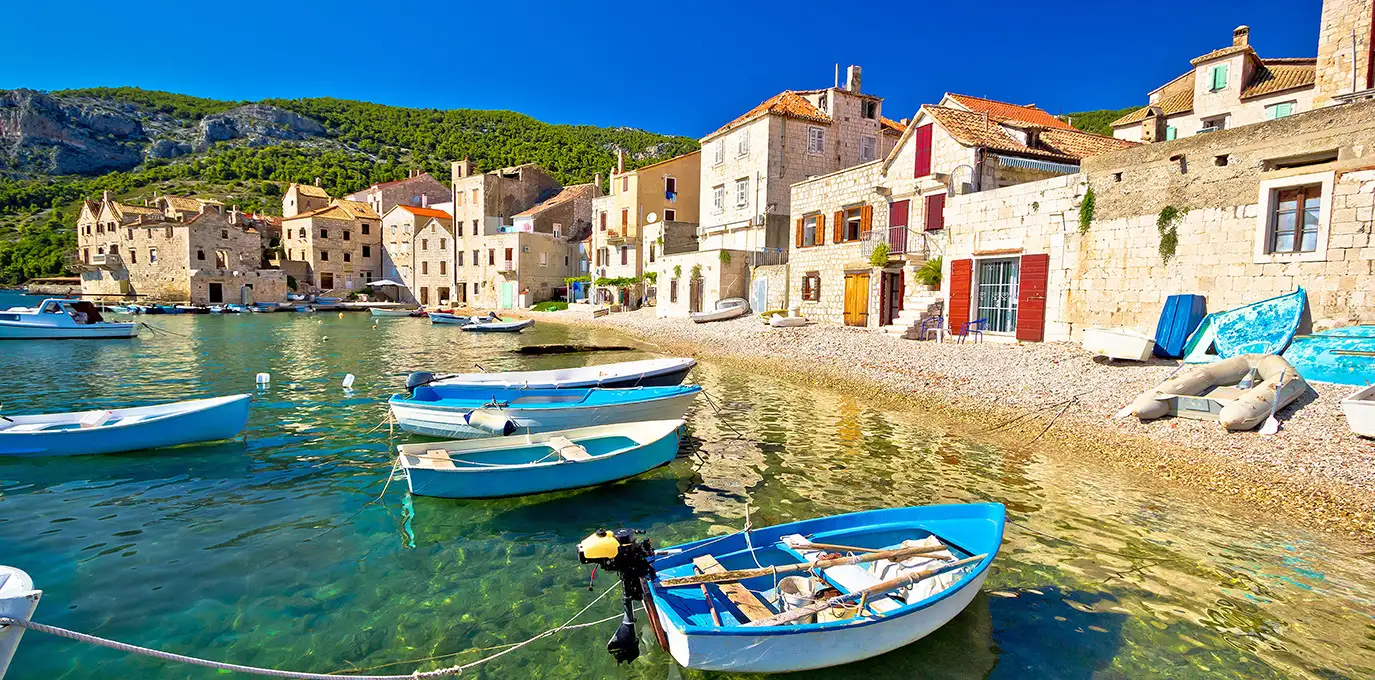
The farthest island of middle Dalmatia is Vis, famous for its clear sea and protected underwater world, rich in sunken ships and miraculous flora and fauna. Due to a large number of hidden bays, and oases of peace that are hard to reach, it is a real paradise for sailors.
Vis is a historical monument in its entirety because of the many preserved facilities (remnants of the Antique town of Issa, Roman spa, Issa necropolis, summer houses, churches, Tito’s cave).
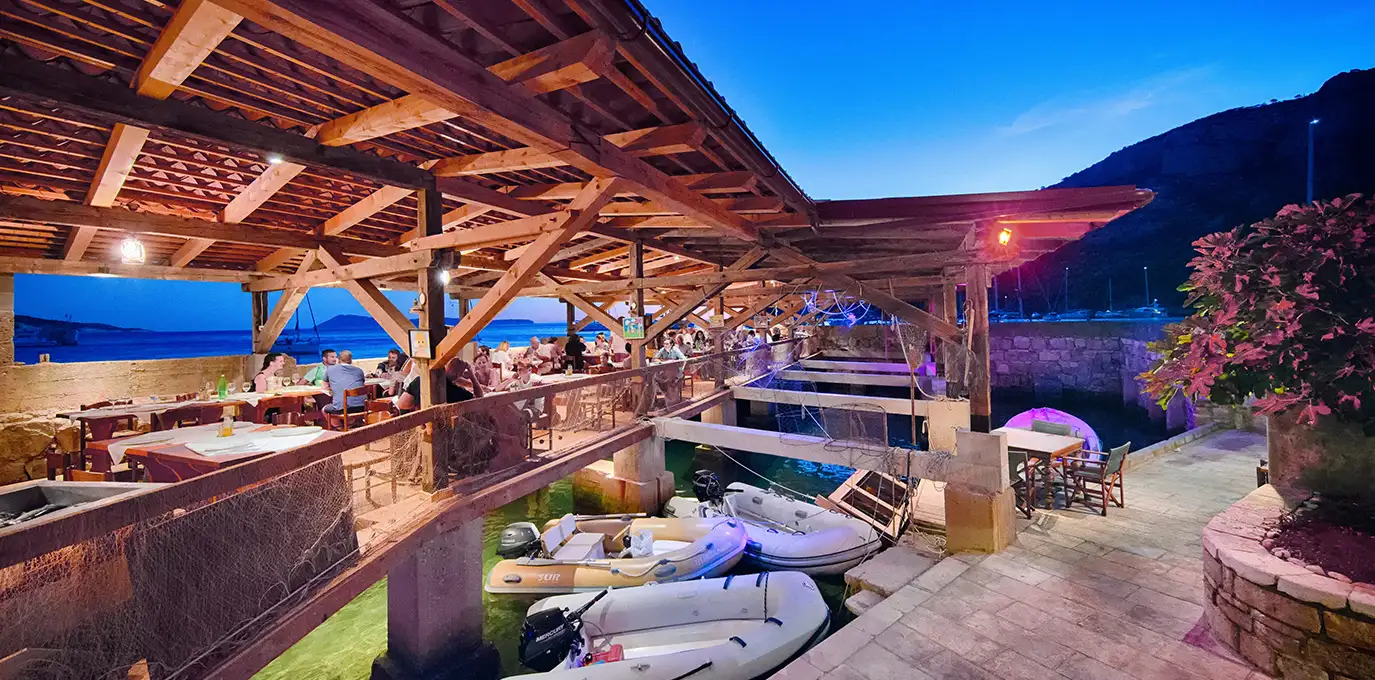
Komiža is a traditional fishing town located at the base of Hum hill on the west side of the island of Vis. Cut off from the rest of the island by the hill, it faces the sea and the Komiža archipelago whose system includes the most distant Adriatic islands rich in fish, particularly tuna - Biševo, Palagruža, Jabuka, etc. Therefore, it is no wonder that traditional Komiža cuisine is founded precisely on these marine delicacies and quality local wines.
The town is full of pebbly beaches, with drinking water sources (Gusarica, Nova Posta, Velo žalo...) and a number of sandy ones. For lovers of active holidays, Komiža really has something to offer, diving, parachute flying, riding, or a trip to the nearby islands - Palagruža, Diomedovo island, or Biševo with the beautiful cave of Modra špilja.
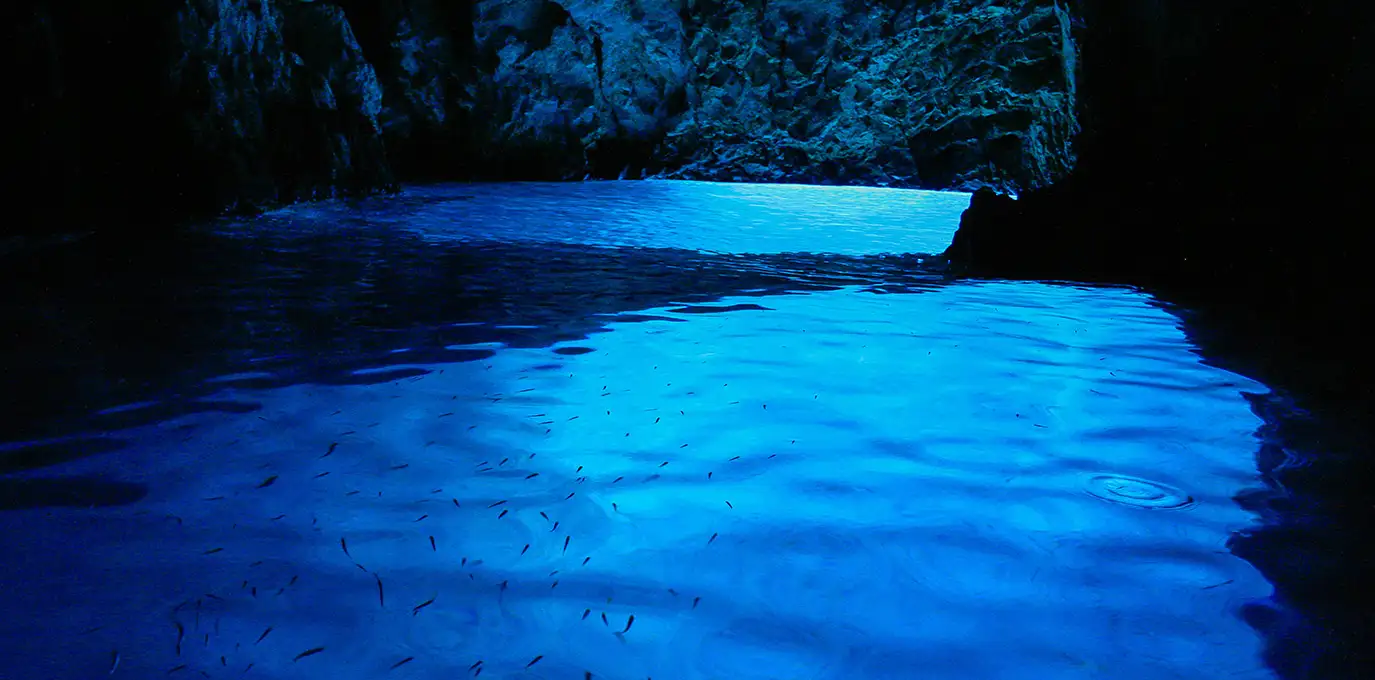
The Blue Grotto or Blue Cave (Croatian: Modra špilja), is a water-logged sea cave located in a small bay called Balun, on the east side of the island of Biševo and about 4.5 nautical miles (8.3 km) from Komiža, in the Croatian Adriatic. It is situated in the central Dalmatian archipelago, 5 kilometers southwest of the island of Vis. The grotto is one of the best-known natural beauty spots on the Adriatic and a popular show cave because of the glowing blue light that appears at certain times of the day.
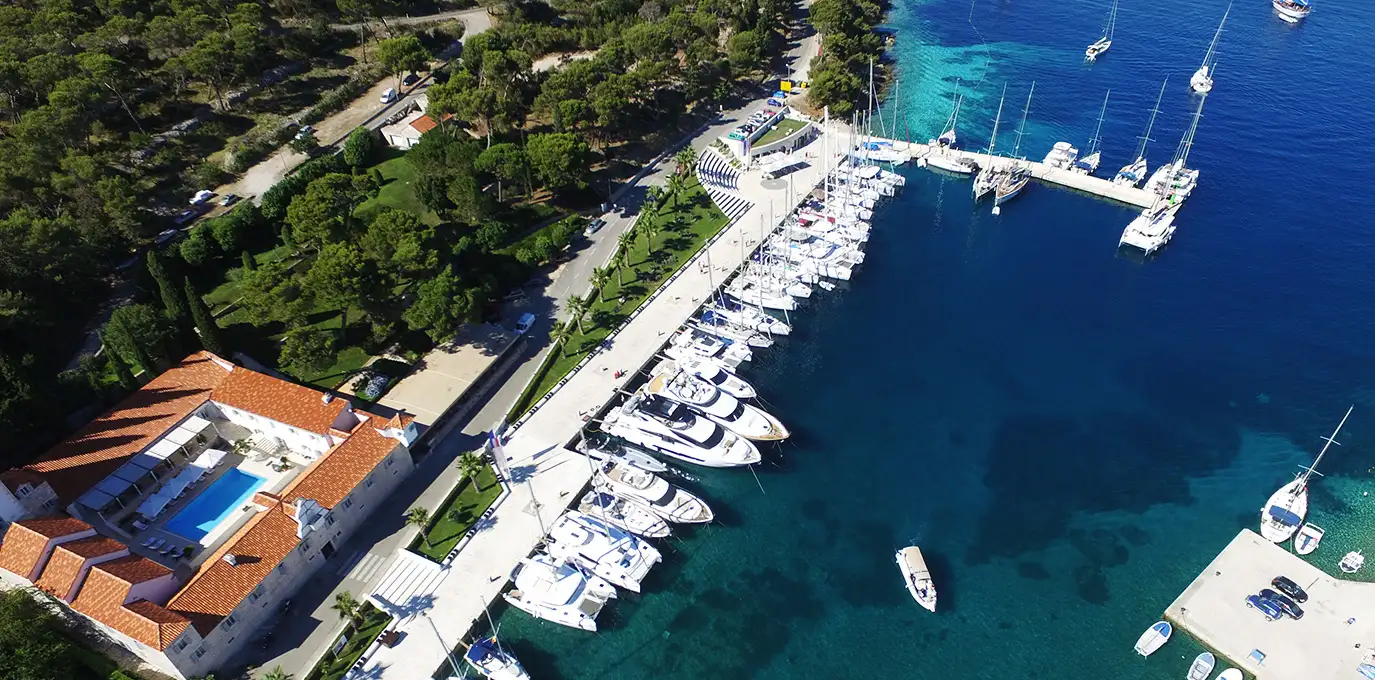
In the year 1884. baron Eugene von Ransonnet described and depicted it. On his suggestion, the entrance to the cave has been enlarged, making it this way accessible to the entire world. The cave has two entrances: the smaller one artificially widened and deepened so that the boat could sail through, and the wider one, located at the southern part of the cave – the underwater passage, through which the magical game of the light and water is performed.
Depending on the season, the ideal moment to visit the cave is between 9 and 13 o’clock in the morning.
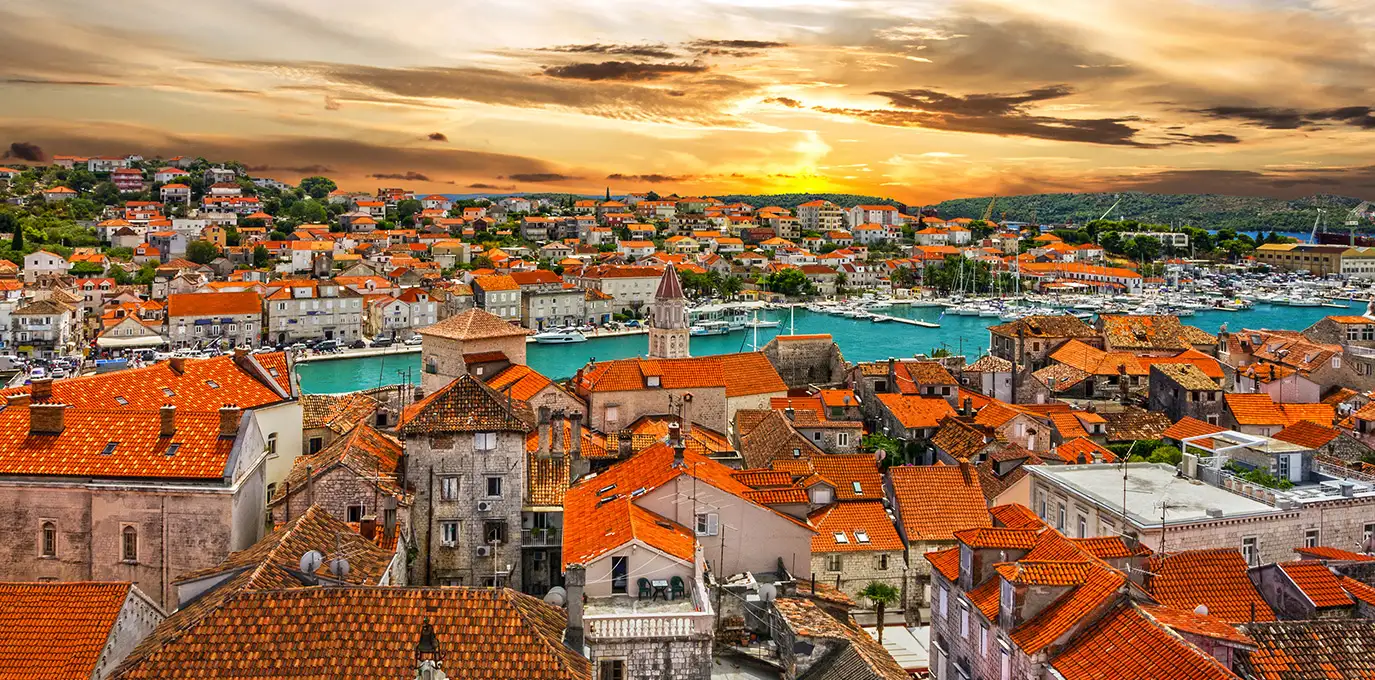
The last day of your journey will take you back to Split. On the way to Split, there are a few little bays worth visiting on the islands of Drvenik and Šolta.
Split: In the evening you should be anchoring your boat in Split ACI marina, the same marina from where you set out. We recommend spending your evening looking around the old town of Split. We do hope that you will be satisfied with our choice of route and we wish you a most enjoyable trip.
Trogir: We invite you to visit Trogir and to see its unique memorial heritage for which it was recorded in the Register of World Heritage of UNESCO in 1997 it is considered the best-preserved Romanic-Gothic town in this part of Europe, is a small Dalmatian town in its surroundings, stunning beaches, and nearby islands.